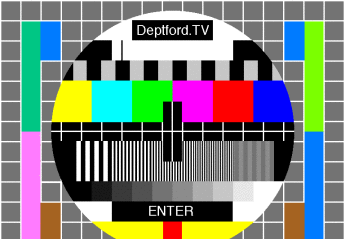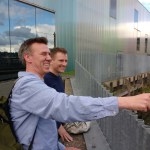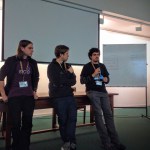 Ongoing MAZI research into DIY networks and complimentary solutions has turned up many great options. Our current favorite is Sandstorm.io a a collaboration suite of open source software which continues to develop and swell with features.
Ongoing MAZI research into DIY networks and complimentary solutions has turned up many great options. Our current favorite is Sandstorm.io a a collaboration suite of open source software which continues to develop and swell with features.
Three new servers in centres of activity, have been introduced where the rising need for safe, secure and stable alternatives to corporate cloud is called for by subscribers and collaborators.
Mazi is well on track to present combinations of network and collective development tools in 2018, a pick and mix of hardware, software and scenario conditioning, though we are not there yet! Adoption of ultra low power ARM based pc’s like Raspberry Pi for a multitude of tasks is on a rocket. On the flipside, a mountain of small format, legacy laptop and powerful low cost / free desktop i386 hardware is in great abundance, a glut even, these are perfect hosts for Sandstorm.
As we concluded the third Creeknet meet-up at Stephen Lawrence Centre this week, it was great to welcome this group of residents from the boating community of Deptford Creek.
The large converted coal barge, Luna, moors alongside a nest of boats in the mud at No2 Creekside and this is where will next meet-up again in March. It’s home to ten young people who share the residence and have expressed enthusiasm to shape their own futures here by improving communications between boat owners and public awareness of river living. Concerns over continuity of mooring for the many boats here is uppermost in everyones mind as development plans emerge that throw assumption about tenure into questions.
When we last spoke to Julian Kingston, he mentioned how difficulties in communications between the new LLP owning the yard, the DLR and boat owners was provoking anxiety. Land access here for moored boats depends on continued good will and understanding from all parties. Shoreside utilities, access to clean water and sanitation, power and telecoms are vital.
 SPC are working with OU and Creeknet friends to establish a network of interactive installations along the tidal creek, that forms a DIY networking trail from Brookmill Park to the Swing Bridge. Using a combination of low power computing and mesh wireless technology, this initiative aims to support existing neighbourhood activity and inform Mazi toolkit development. Follow it along the length of the tidal creek from beacon to beacon, each point presenting locally sourced and augmented information.
SPC are working with OU and Creeknet friends to establish a network of interactive installations along the tidal creek, that forms a DIY networking trail from Brookmill Park to the Swing Bridge. Using a combination of low power computing and mesh wireless technology, this initiative aims to support existing neighbourhood activity and inform Mazi toolkit development. Follow it along the length of the tidal creek from beacon to beacon, each point presenting locally sourced and augmented information.
Each Mazizone consists of a reconfigured Rasbian operating on a Raspberry Pi that hosts, webserver and database tools that are arranged and refined to suit local conditions. They are connected to existing broadband internet or as standalone ‘offline’ systems.  Each offers ‘Creeknet’ wireless access, which responds to your web request by presenting a captive ‘portal’ page loaded with guides for use, selected collaboration tools, and a view on each neighborhood.
Each offers ‘Creeknet’ wireless access, which responds to your web request by presenting a captive ‘portal’ page loaded with guides for use, selected collaboration tools, and a view on each neighborhood.
The current MAZI toolkit release is V1.6 with the project sources bug tracking and development notes at Github. We invite all those interested to get in touch, download and install the development images and contribute feedback and follow our progress. The details of how best to configure and deploy a mazizone are being accumulated as we experiment.
Project partners at Univesity of Thessaly in Greece have the job of building and managing the development of the toolkit software, adding and adapting to the evolving requirements. You can preview the default Mazi toolkit, but for better insight into how progress is being made in London please visit one of the Creeknet Mazizones and try out the options. 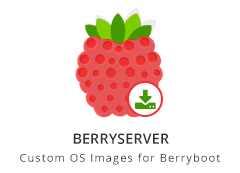 We now also have berryboot versions of the toolkit hosted by Alex Goldcheidt alongide the hundreds of alternative OS for the Raspberry Pi at Berryserver.
We now also have berryboot versions of the toolkit hosted by Alex Goldcheidt alongide the hundreds of alternative OS for the Raspberry Pi at Berryserver.
Since loosing the boat in a fire in January, Minesweeper Collective are operating in Deckspace and at DIY Space for London. 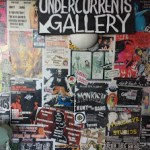 Their Undercurrents gallery at Birdsnest was first to be installed to support the group art exhibitions updated each month.
Their Undercurrents gallery at Birdsnest was first to be installed to support the group art exhibitions updated each month.
We have been meeting Creeknet friends regularly at Hoy kitchen on Creek Road where a Mazizone was installed in March. We will return there this coming Monday at noon for a research session with those specifically interested in clean-up of the Hoy Steps.
Artist Karen Barnes mazizone is Eileen Ford named after her pinhole camera truck parked in the yard at N02 Creekside. It has a built in camera and other sensory extensions, fitted inside her human sized portable ‘box camera’ to record and publish pinhole images on the move.  It operates in ‘offline’ mode and presents a guestbook, image galleries, and reports on changing conditions.
It operates in ‘offline’ mode and presents a guestbook, image galleries, and reports on changing conditions.
When we return to Brookmill Park in May the fourth Creeknet Mazizone will be installed at the Park keepers hut by the pond. It will help friends of Brookmill Park co-ordinate public events, present wildlife images and environmental conditions.
Our UK partners at Open University have set up a mazizone installation of their own to demonstrate to their colleagues and experiment with new features whilst in their work space in Milton Keynes.
